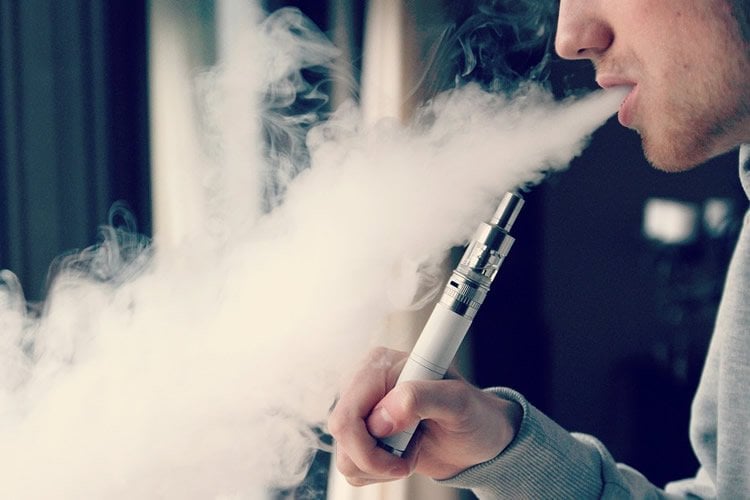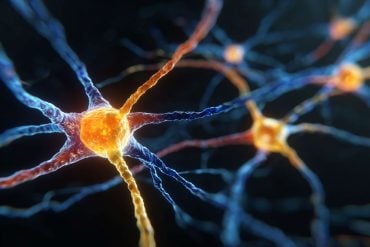Summary: Researchers report brain alterations associated with heightened feelings of negative emotion and alienation in people who have a dependence on cannabis.
Source: Elsevier.
Young people with cannabis dependence have altered brain function that may be the source of emotional disturbances and increased psychosis risk that are associated with cannabis abuse, according to a new study published in Biological Psychiatry: Cognitive Neuroscience and Neuroimaging. The alterations were most pronounced in people who started using cannabis at a young age. The findings reveal potential negative long-term effects of heavy cannabis use on brain function and behavior, which remain largely unknown despite the drug’s wide use and efforts to legalize the substance.
The study, by Drs. Peter Manza, Dardo Tomasi, and Nora Volkow of the National Institute on Alcohol Abuse and Alcoholism, Bethesda, Maryland, assessed resting brain activity data from the Human Connectome Project of 441 young adults, and compared a smaller set of 30 people who met criteria for cannabis abuse with 30 controls. People with heavy cannabis use had abnormally high connectivity in brain regions important for reward processing and habit formation. The same regions have also been pegged in the development of psychosis in previous research.
“These brain imaging data provide a link between changes in brain systems involved in reward and psychopathology and chronic cannabis abuse, suggesting a mechanism by which heavy use of this popular drug may lead to depression and other even more severe forms of mental illness,” said Dr. Cameron Carter, Editor of Biological Psychiatry: Cognitive Neuroscience and Neuroimaging.

The brain alterations were also associated with heightened feelings of negative emotionality, especially alienation, where one feels a sense of hostility or rejection from others. The link points to a potential biological mechanism for why feelings of alienation are often profoundly increased in people with cannabis dependence.
“Interestingly, the hyperconnectivity was strongest in the individuals who began using cannabis in early adolescence,” said Dr. Manza, which lines up with reports of a higher risk of psychiatric problems when cannabis use begins early in life. Adolescence is a critical period of brain development, making early use of cannabis particularly detrimental. According to Dr. Manza, the measurement of resting brain activity is a relatively easy and non-invasive procedure, so the approach could be a useful measure for tracking the development of psychiatric symptoms with cannabis use.
Source: Elsevier
Publisher: Organized by NeuroscienceNews.com.
Image Source: NeuroscienceNews.com image is in the public domain.
Original Research: Full open access research for “Subcortical local functional hyperconnectivity in cannabis dependence” by Peter Manza, Dardo Tomasi, and Nora D. Volkow in Biological Psychiatry: Cognitive Neuroscience and Neuroimaging. Published online November 21 2017 doi:10.1016/j.bpsc.2017.11.004
[cbtabs][cbtab title=”MLA”]Elsevier “Cannabis Abuse Alters Activity of Brain Regions Linked to Negative Emotion.” NeuroscienceNews. NeuroscienceNews, 16 January 2018.
<https://neurosciencenews.com/cannabis-negative-emotion-8320/>.[/cbtab][cbtab title=”APA”]Elsevier (2018, January 16). Cannabis Abuse Alters Activity of Brain Regions Linked to Negative Emotion. NeuroscienceNews. Retrieved January 16, 2018 from https://neurosciencenews.com/cannabis-negative-emotion-8320/[/cbtab][cbtab title=”Chicago”]Elsevier “Cannabis Abuse Alters Activity of Brain Regions Linked to Negative Emotion.” https://neurosciencenews.com/cannabis-negative-emotion-8320/ (accessed January 16, 2018).[/cbtab][/cbtabs]
Abstract
Subcortical local functional hyperconnectivity in cannabis dependence
Background
Cannabis abuse has been associated with psychopathology, including negative emotionality and a higher risk of psychosis, particularly with early age of initiation. However, the mechanisms underlying this association are poorly understood. Because aberrant dopamine (DA) signaling is implicated in cannabis-associated psychopathology, we hypothesized that regular cannabis abuse (CA) would be associated with altered resting functional connectivity in dopamine midbrain-striatal circuits.
Methods
We examined resting brain activity of subcortical regions in 441 young adults from the Human Connectome Project, including 30 CA meeting DSM criteria for dependence, and 30 controls matched on age, sex, education, BMI, anxiety, depression, and alcohol/tobacco usage.
Results
Across all subjects, local functional connectivity density (lFCD) hubs in subcortical regions were most prominent in ventral striatum, hippocampus, amygdala, dorsal midbrain, and the posterior-ventral brainstem. As hypothesized, CA showed markedly increased lFCD relative to controls in ventral striatum (where nucleus accumbens is located) and midbrain (where substantia nigra/ventral tegmental nuclei are located) but also in brainstem and lateral thalamus. These effects were observed in the absence of significant differences in subcortical volumes, and were most pronounced in the individuals who began cannabis use earliest in life and who reported high levels of negative emotionality.
Conclusions
Together, these findings suggest that chronic cannabis abuse is associated with changes in resting brain function, particularly in dopaminergic nuclei implicated in psychosis but that are also critical for habit formation and reward processing. These results shed light on neurobiological differences that may be relevant to psychopathology associated with cannabis use.
“Subcortical local functional hyperconnectivity in cannabis dependence” by Peter Manza, Dardo Tomasi, and Nora D. Volkow in Biological Psychiatry: Cognitive Neuroscience and Neuroimaging. Published online November 21 2017 doi:10.1016/j.bpsc.2017.11.004







